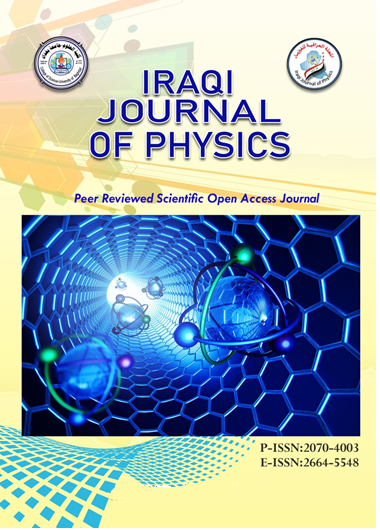Abstract
A model of the sensor nanochip based on germanium/silicon heterostructures (Ge/Si-heterostructures) with Ge quantum dots is suggested. Two-Quasimolecule Spectrum: Infrared radiation can sense the formation of a single exciton quasimolecule. Optical transitions of this state to higher-lying SIE levels lead to the emission of radiation in the infrared part of the spectrum, with the energy of the emitting radiation being ∼70 meV and its normalized intensity ∼0.11. Such a unique type of infrared light can be considered as a strong signature in detection of single exciton quasimolecules in Ge/Si heterostructures. The sensor nanochip model to be proposed would should lay the foundation for both the fundamentals and applications, and the process could lead to the next generation of high-efficient sensor nanochip. Its successful fabrication would open a way for high performance exciton optoelectronic devices, highly sensitive, miniaturized, and CMOS-based infrared detectors for the biomedical, environmental and communication applications.
Abstract
يُقترح نموذجٌ لرقاقة استشعار نانوية مبنية على بنى غير متجانسة من الجرمانيوم والسيليكون (بنى غير متجانسة من الجرمانيوم والسيليكون) مع نقاط كمية من الجرمانيوم. طيف شبه الجزيء ثنائي الجزيء: يمكن للأشعة تحت الحمراء استشعار تكوين شبه جزيء إكسيتون واحد. تؤدي الانتقالات الضوئية لهذه الحالة إلى مستويات SIE أعلى إلى انبعاث إشعاع في الجزء تحت الأحمر من الطيف، بطاقة الإشعاع المنبعث حوالي 70 ميجا فولت وشدته المعيارية حوالي 0.11. يمكن اعتبار هذا النوع الفريد من ضوء الأشعة تحت الحمراء بمثابة بصمة قوية في الكشف عن شبه جزيء إكسيتون واحد في بنى غير متجانسة من الجرمانيوم والسيليكون. من المفترض أن يُرسي نموذج رقاقة الاستشعار النانوية المقترح الأساس لكل من الأساسيات والتطبيقات، وقد تؤدي هذه العملية إلى الجيل التالي من رقائق الاستشعار النانوية عالية الكفاءة. إن نجاح تصنيعها من شأنه أن يفتح الطريق أمام إنتاج أجهزة بصرية إلكترونية عالية الأداء وأجهزة كشف الأشعة تحت الحمراء شديدة الحساسية والمصغرة والمعتمدة على CMOS للتطبيقات الطبية الحيوية والبيئية والاتصالات.
